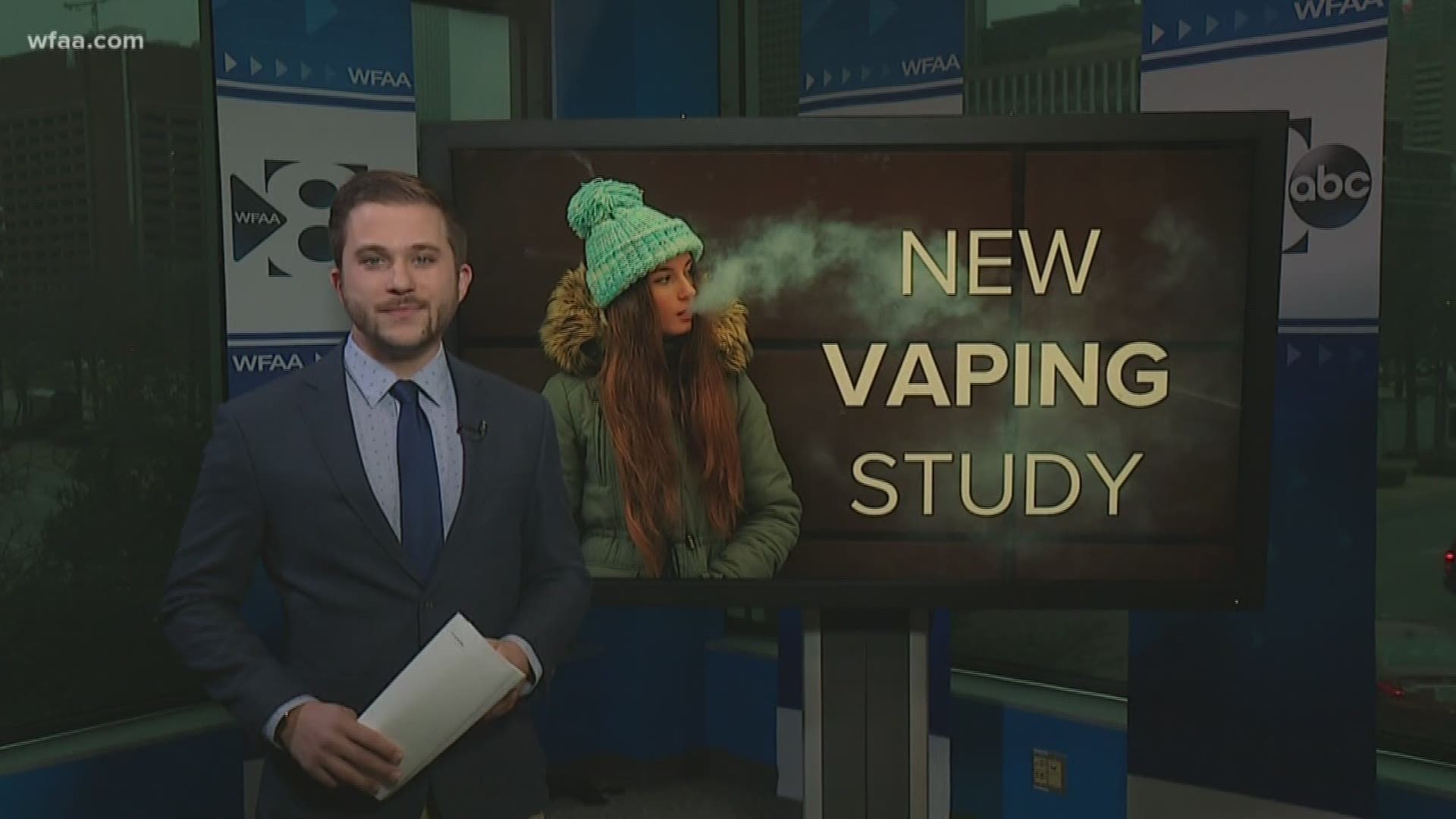The Partnership for Drug-Free Kids compiled a guide for parents on how to know if your child is vaping nicotine liquid or THC, and what to do about it.
The following is an excerpt from their guide: What are the signs of vaping?
Equipment: You may find devices that look like flash drives, e-juice bottles, pods (that contain e-juice) or product packaging. Aside from leaf marijuana, gel jars that contain dabs, small tools to scoop dabs and cartridges that contain THC oil are signs of vaping marijuana.
Online purchases / packages in the mail / store purchases: Be on the lookout for purchases made online and charged to your credit card or unusual packages that arrive in the mail. Kids also buy them at big box stores, gas stations or from other friends.
Scent: While the smell from vaping is faint, you may catch a whiff of a flavoring where there appears to be no other source. For example, if you smell bubble gum or chocolate cake, take note.
Increased thirst / nose bleeds: Some of the chemicals used in e-juices have the effect of drying out the mouth and nasal passages. As a result, some kids drink more liquids or seem more prone to nose bleeds.
Decreased caffeine use: Some teens and young adults develop a sensitivity to caffeine. If your child drank caffeinated energy drinks and quits, it may be as a result of vaping.
Vaping lingo: You may see vape lingo in text messages such as “atty” for an atomizer, “VG” for vegetable glycerin found in e-juice or “sauce” referring to e-juice. Kids often brag about their vaping exploits on social media. Look for pictures on Instagram or YouTube or check their Twitter accounts.
Appearance and behavior changes: Just like smoking, vaping marijuana can result in bloodshot eyes, dry mouth and thirst, increased appetite and shifts in behavior and mood. Sometimes, there is a noticeable change in friends and a decrease in activities that were once enjoyed.
MORE RESOURCES:
General Resources:
Resources for Parents and Teachers:
Youth-Focused Resources:
- FDA’s Education Campaign – The Real Cost of Vaping
- CDC – Know the Risks: A Youth Guide to E-cigarettes
- National Institute on Drug Abuse (NIDA) for Teens
- Truth Initiative – E-Cigarette Quit Program
- National Jewish Health – Online Youth E-Cigarette Cessation Program
- American Lung Association – N-O-T: Not On Tobacco –Teen Smoking and Vaping Cessation Program
Youth Education Programs:
- Campaign for Tobacco-Free Kids – Taking Down Tobacco
- Stanford Medicine Tobacco Prevention Toolkit – E-Cigarettes and Vape Pens
- CATCH My Breath – Youth E-cigarette Prevention Program
- American Academy of Pediatrics
- National Cancer Institute’s Smokefree Teen - How to Quit Vaping
- Campaign for Tobacco Free Kids
- Truth Initiative
- Adolescent Health - “What’s New”

